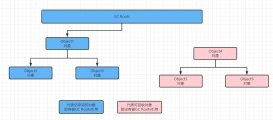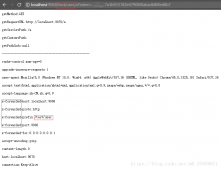findById方法和getOne方法区别
Jpa基础的CRUD方法继承自接口CrudRepository<T, ID>,包含以下方法:
|
1
2
3
4
5
6
7
8
9
10
11
|
<S extends T> S save(S entity);<S extends T> Iterable<S> saveAll(Iterable<S> entities);Optional<T> findById(ID id);boolean existsById(ID id);Iterable<T> findAll();Iterable<T> findAllById(Iterable<ID> ids);long count();void deleteById(ID id);void delete(T entity);void deleteAll(Iterable<? extends T> entities);void deleteAll(); |
getOne()方法是JpaRepository接口中定义的
源码如下:
|
1
2
3
4
5
6
7
8
9
10
11
|
/** * Returns a reference to the entity with the given identifier. Depending on how the JPA persistence provider is * implemented this is very likely to always return an instance and throw an * {@link javax.persistence.EntityNotFoundException} on first access. Some of them will reject invalid identifiers * immediately. * * @param id must not be {@literal null}. * @return a reference to the entity with the given identifier. * @see EntityManager#getReference(Class, Object) for details on when an exception is thrown. */T getOne(ID id); |
网上找的源码:
|
1
2
3
4
|
public T getOne(ID id) { Assert.notNull(id, "The given id must not be null!"); return this.em.getReference(this.getDomainClass(), id);} |
由getOne方法的源码可见,getOne方法会返回一个和给定id匹配的实体的引用,方法实际是调用getReference方法,也就是说加载策略是延迟加载,直到调用这个对象的时候才真正从数据库中进行查询(x_x)。
再看findById()方法
|
1
2
3
4
5
6
7
8
9
10
11
|
public Optional<T> findById(ID id) { Assert.notNull(id, "The given id must not be null!"); Class<T> domainType = this.getDomainClass(); if (this.metadata == null) { return Optional.ofNullable(this.em.find(domainType, id)); } else { LockModeType type = this.metadata.getLockModeType(); Map<String, Object> hints = this.getQueryHints().withFetchGraphs(this.em).asMap(); return Optional.ofNullable(type == null ? this.em.find(domainType, id, hints) : this.em.find(domainType, id, type, hints)); }} |
findById实际上调用的是find方法,采用立即加载方式,执行这条查询语句的时候就会立刻从数据库中进行查询,不过findById方法返回的是一个Optional,需要对这个Optional调用.get()方法才能得到需要的实体。
总结就是getOne方法是懒加载,直到调用它返回的实体时才会对数据库进行查询,findById是立即加载,主要调用方法就会去数据库查询。getOne方法直接返回一个实体,findById方法返回一个Optional,需要调用.get()方法获取实体。
spring-data-jpa中findById()的使用
springboot 2.x 版本后,较之前的版本在此方法的使用上有差:
如果找到匹配的id数据,则赋值给foo;否则则将括号中的对象赋值给foo。
|
1
2
3
4
|
Foo foo = repository.findById(id) .orElse(null);Foo foo = repository.findById(id) .orElse(new Object()); |
以上为个人经验,希望能给大家一个参考,也希望大家多多支持服务器之家。
原文链接:https://blog.csdn.net/qq_42026590/article/details/112364798














